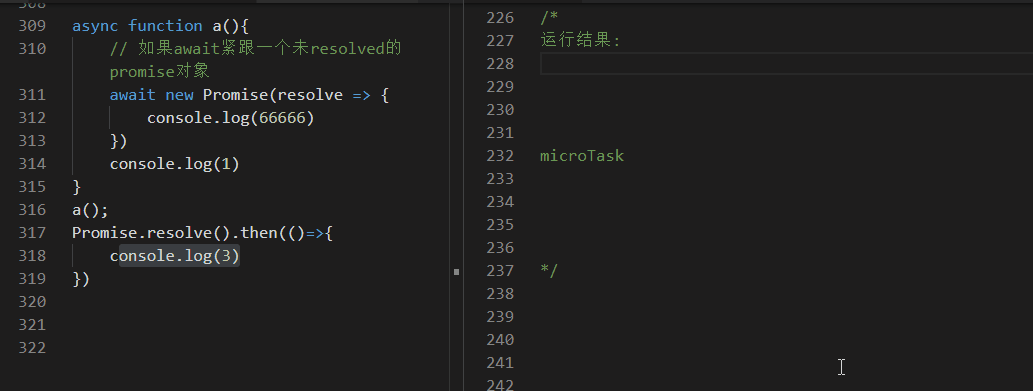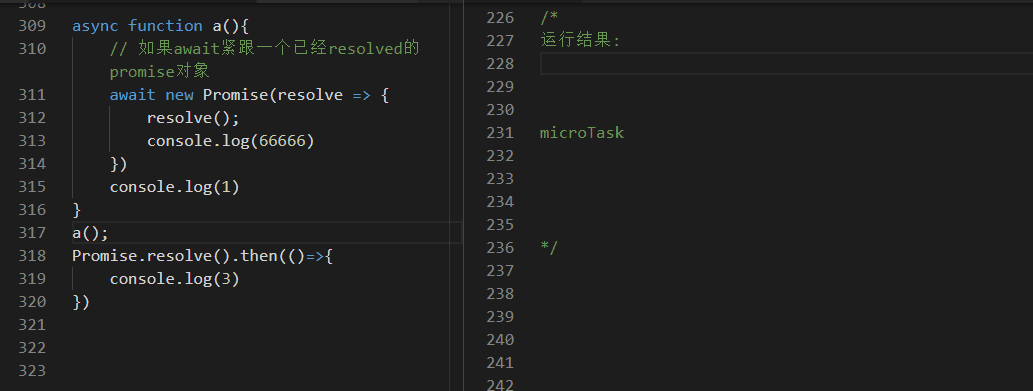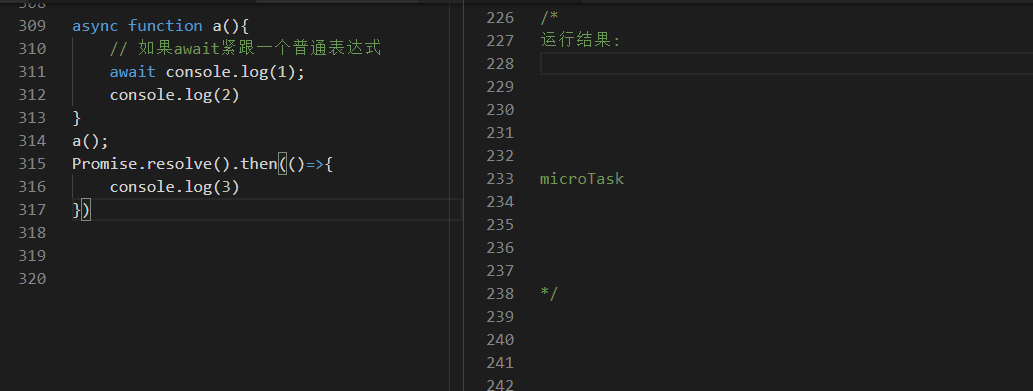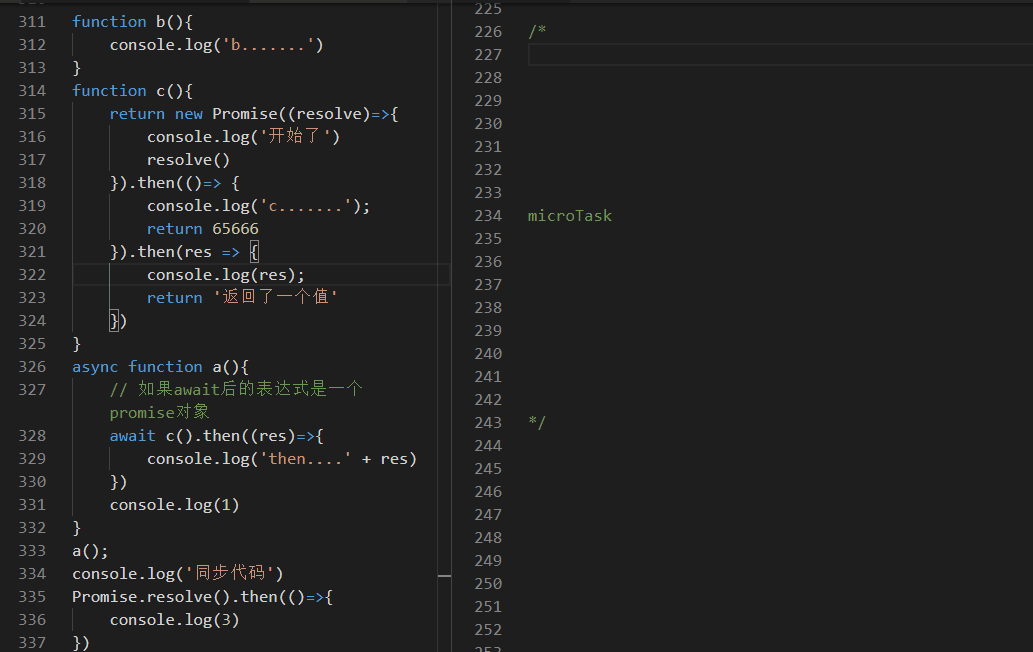await后可以跟一个异步表达式(如promise的表达式),也可以跟一个普通的表达式(如:console.log(123))
例子1:如果await紧跟一个没有resolve的promise对象,则后续的代码不会被执行。如:
async function a(){
// 如果await后是promise对象
await new Promise(resolve => {
console.log(66666)
})
console.log(1)
}
a();
Promise.resolve().then(()=>{
console.log(3)
})运行结果:
运行结果:
66666
3这里要注意,console.log(1)并不会被执行,这是因为
async function a(){
// 如果await紧跟一个普通表达式
await console.log(1);
console.log(2)
}相当于
async function a(){
new Promise(resolve => {
console.log(1)
}).then(() => {
console.log(2)
})
}由于没有Promise状态没有resolved,因此不会执行后续.then的代码。
运行过程示意图:

例子2:如果await紧跟一个已经resolved的Promise对象
async function a(){
// 如果await紧跟一个已经resolved的promise对象
await new Promise(resolve => {
resolve();
console.log(66666)
})
console.log(1)
}
a();
Promise.resolve().then(()=>{
console.log(3)
})运行结果:
运行结果:
66666
1
3运行过程示意图:

例子3:await后紧跟一个普通表达式
async function a(){
// 如果await紧跟一个普通表达式
await console.log(1);
console.log(2)
}
a();
Promise.resolve().then(()=>{
console.log(3)
})运行结果:
运行结果:
1
2
3运行过程示意图:

例子4:一个较为复杂的例子
function c(){
return new Promise((resolve)=>{
console.log('开始了')
resolve()
}).then(()=> {
console.log('c.......');
return 65666
}).then(res => {
console.log(res);
return '返回了一个值'
})
}
async function a(){
// 如果await后的表达式是一个promise对象
await c().then((res)=>{
console.log('then....' + res)
})
console.log(1)
}
a();
console.log('同步代码')
Promise.resolve().then(()=>{
console.log(3)
})运行结果:
'开始了'
'同步代码'
'c.......'
3
65666
'then....返回了一个值'
1运行过程示意图:

例子9:
